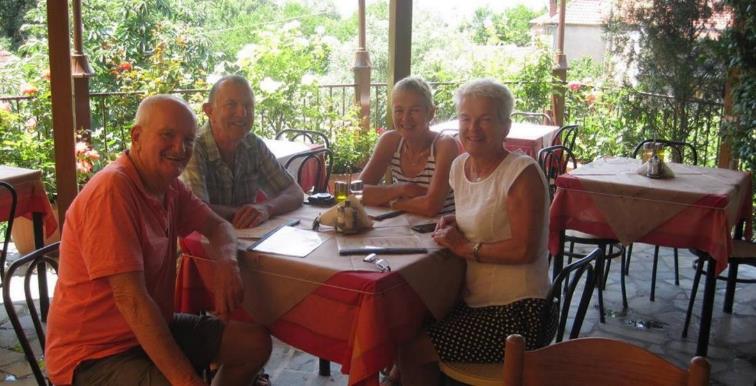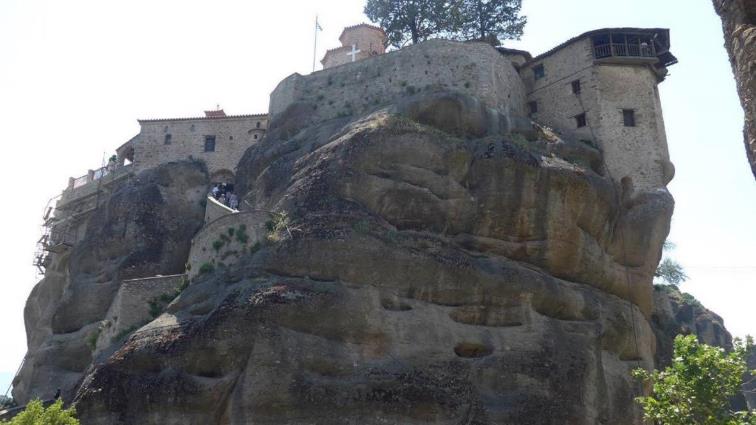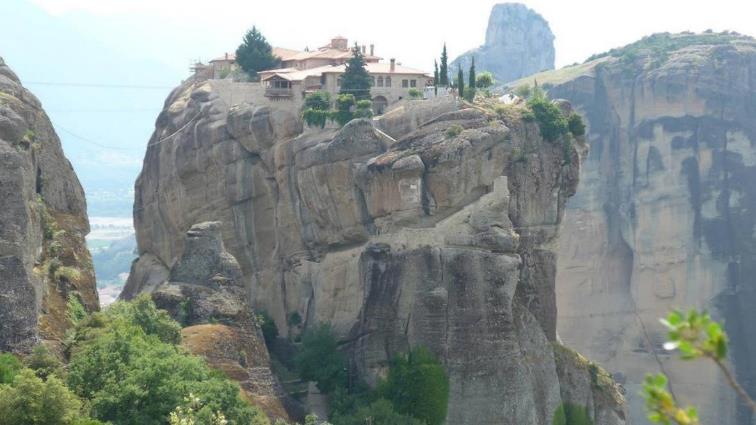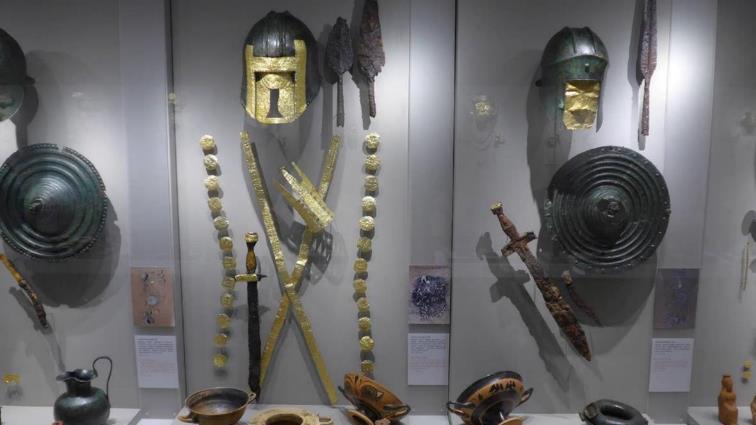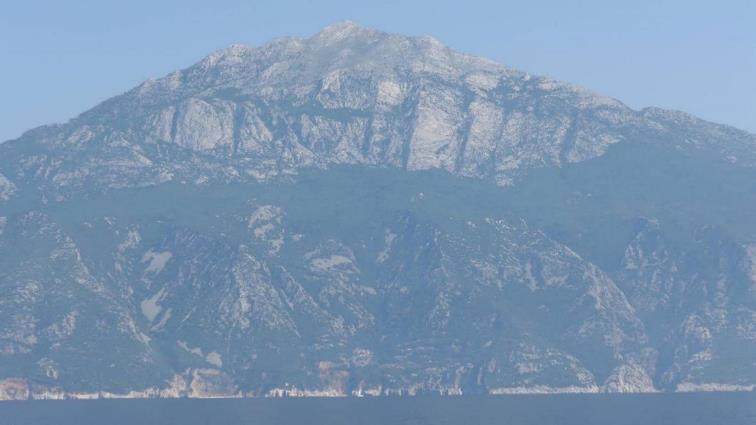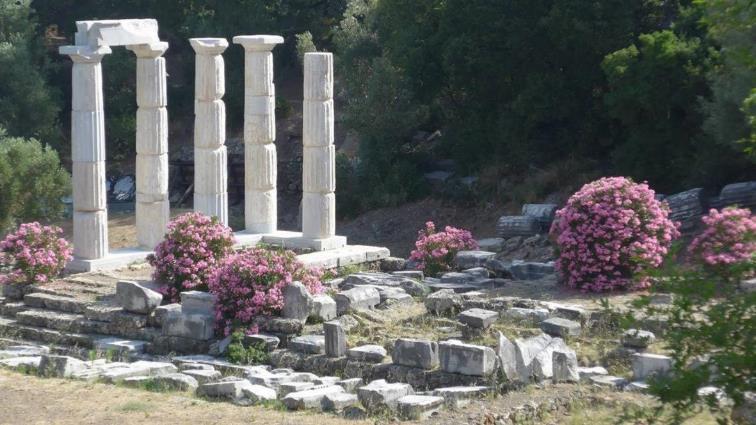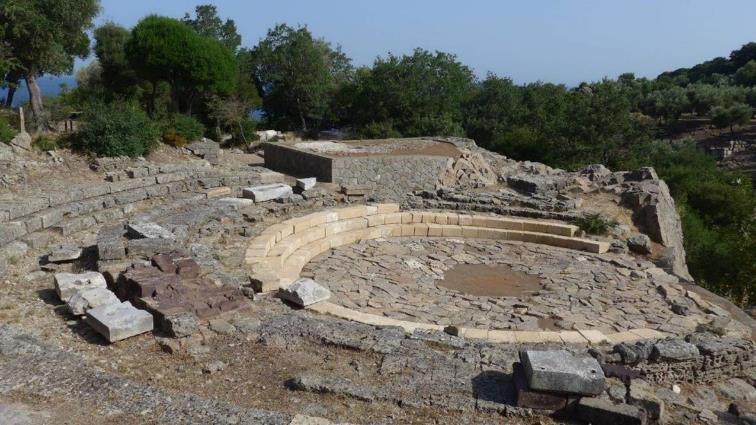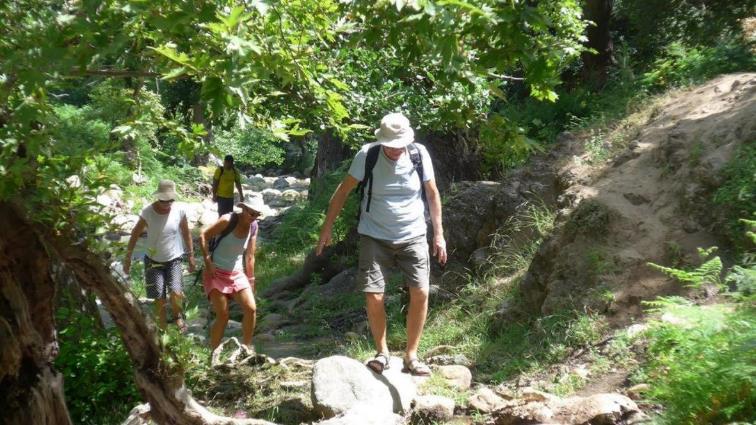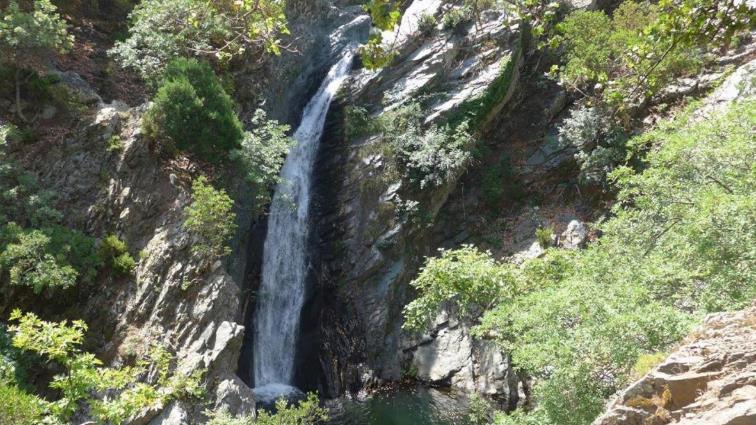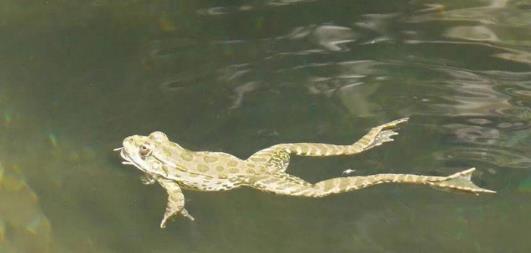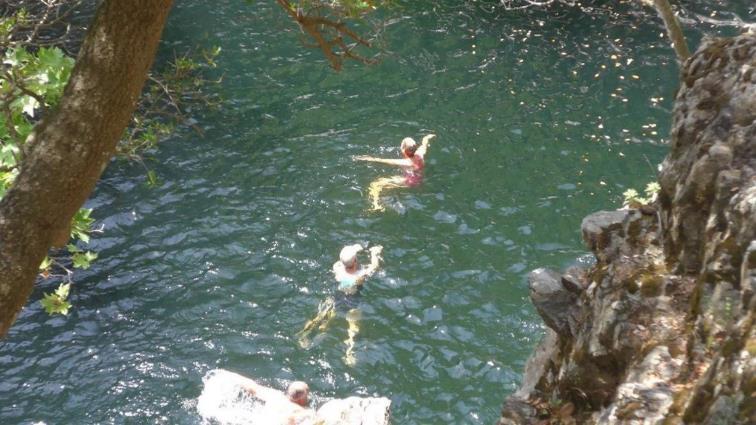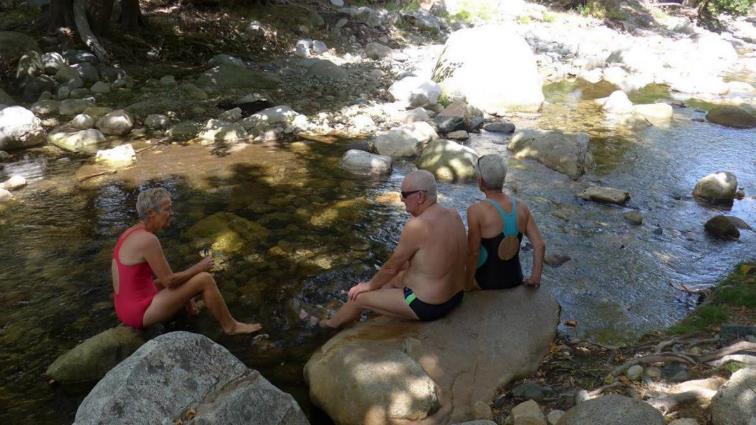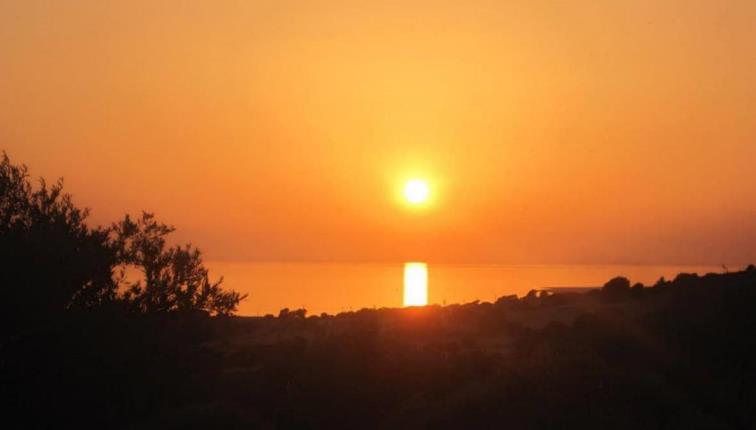Samothraki

40:28.507N 25:28.181E Thu 29th June 2017 Patsy and Roger have now been with us for a week and we have been busy sightseeing as well as doing plenty of lazing around in between. The heat has been very challenging both by day and at night so energetic activities are strictly limited. Last Monday we hired a car and drove into the mountainous interior of Greece from our base in Thessaloniki. We stayed in the little town of Kastraki at the base of the incredible rocky pinnacles of Meteora where monasteries cling to the tops and the monks used to be hauled up in baskets from hundreds of feet below. We visited two of the monasteries, very popular with tourists, including the largest and were amazed at how well maintained and prosperous they appeared. The churches within the complex of buildings were magnificently decorated with frescoes covering every surface, some highlighting the gruesome sufferings of martyred saints. We were intrigued by a large old kitchen with smoke blackened walls and by the mechanism which brought monks and goods up the vertiginous cliffs. The best thing of all however, was the view over the dramatic landscape from these extraordinary places. We drove past the monastery that featured in an old Bond film, “For Your Eyes Only” bur chose not to tackle another hot, steep staircase to view inside. Lunch in Meteora:
Monastery views:
After a night in a hotel, making the most of the air conditioning, we drove to the town of Vergina where the Royal Tombs of King Philip of Macedonia, father of Alexander the Great, were discovered in the 1980s. The tombs can be viewed at the very site where they were unearthed along with the quite incredible treasures they contained which included several stunning gold wreaths, beautifully decorated silver chalices and an entire suit of armour. We were all blown away by the exhibits – not to be missed! After that, the second archaeological site on our agenda, the ancient city of Pella where Alexander was born and its accompanying museum, was interesting but a bit of an anti-climax. The site itself was very spread out, hot and dusty, so we didn’t linger long, but the museum did contain several examples of Greek mosaics which we hadn’t come across before. Unlike Roman mosaics, they are made from tiny pebbles and have features outlined in darker stones or terracotta. Greek mosaics:
Greek warrior burial goods:
We returned ourselves and the car to Thessaloniki after our two day excursion and struggled with the heat back on board that night. We were glad to leave the marina early the next morning, heading south this time and anchored once again in Porto Koufo after motoring for nearly 12 hours. We did have some afternoon winds but they were in on the nose in true awkward Med fashion! The highlight of the day was spotting some very large (for the Med) fish – tuna(?) which leapt right out of the water on several occasions. In Porto Koufo we anchored very close to the same spot as the first time there and after a quick cool off swim enjoyed a much more bearable night on the water. The next day we headed off again on another marathon day’s motoring, this time over glassy seas to our destination of little Samothraki way out in the northern Aegean. We went by way of the Mount Athos peninsular and counted monasteries on the slopes of the very impressive mountain. The whole peninsular belongs to the monastic community and is off limits completely to women. Boats cannot come within a mile of the coast either and even female animals (apart from birds) are banned on land. There are about 2000 monks in residence these days apparently. We enjoyed peering through the binoculars at all the buildings, including one on the very top of the mountain, before heading east and reaching Samothraki at the end of the day. En-route we did see a school of dolphins pursuing some large fish which enlivened the passage. Mt Athos – some monasteries just visible:
After a 12 hour motor we reached the imposing “marble block” of Samothraki with its 1600m high Mount Fengari. We anchored off a beach for a quick dip before tying up alongside in the fishing and ferry port of Kamariotissa. This remote island has some amazing contrasts of landscape, with barren brown hills to the west, some fertile fields on a plain to the south and in the north and centre, wonderful streams, waterfalls and rock pools amidst lush greenery. It also has one of the most important archaeological sites in Greece, the ancient Thracian “Sanctuary of the Great Gods”, which dates back to around 1000BC. We hired a car one day and toured the site early and had it to ourselves. Its setting was gorgeous and the ruins extremely atmospheric. The most famous find however, was looted by French explorers in the 19th century and is now in the Louvre. It is known as the “Winged Victory of Samothrace” and we would love to see it one day. Sanctuary of the Great Gods:
After our cultural exertions, we had a lovely 40 minute walk alongside a winding river bed to the first of a series of rock pools with a waterfall, where you could dive in and really cool off in the fabulous fresh water. Luckily it was not as “icy cold” as the guide books said and we all enjoyed a good splash right underneath the falls. It was a magical experience. We also visited the attractive main old town or Hora tucked up in a crack in the hills with wonderful views seawards again and finished the day with a delicious meal of barbecued goat in a village in the more agricultural south where the meat, wine and olive oil was all produced by the taverna owners. Walking to the pools:
A nice cooling waterfall:
A local swimming:
And some visitors cooling off:
Sunset over Samothraki:
|
